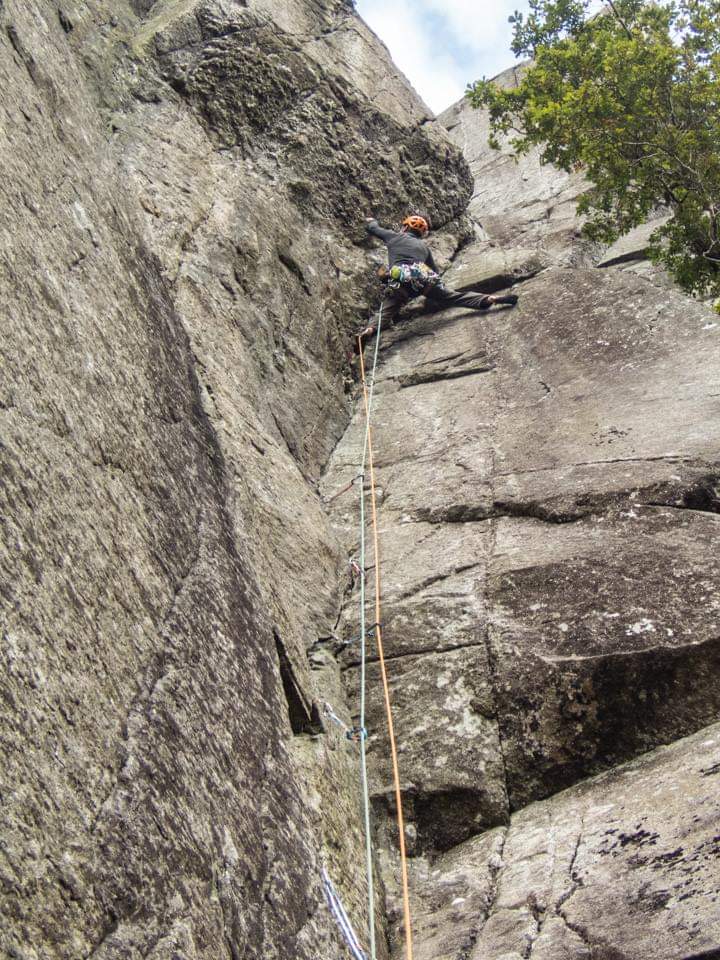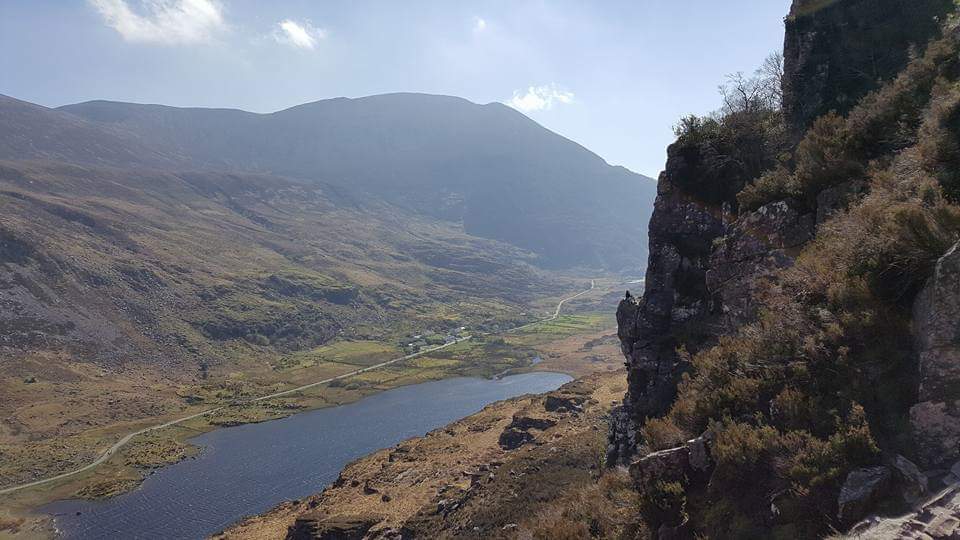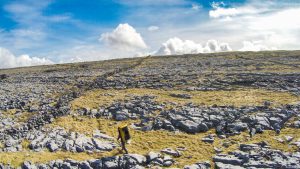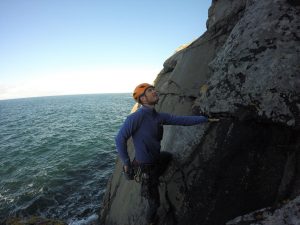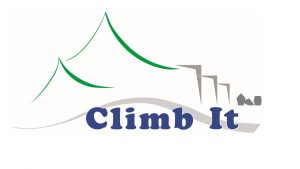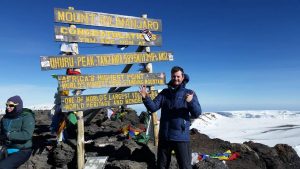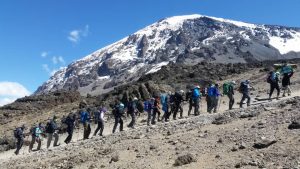If you’ve spent any time walking in the Irish hills and mountains, you will be well aware of what mild hypothermia feels like, even if you didn’t fully recognise it at the time.
Hypothermia doesn’t just happen in the depths of winter, in the upland, it can catch us out at any time of year, especially with the rapid changes of weather we are used to.
Prevention is obviously better than cure, so when we are allowed on the hills again we should come prepared.
Catching Hypothermia in the Hills
No matter what the weather is like when we leave the car park, we should always be prepared to expect harsher conditions and carry the right amount and kind of equipment with us.
At the bottom of the page, I’ve listed an appropriate gear list for hiking in Ireland.
But we can all be caught off guard on the hills, so how can we recognise hypothermia as its happening and manage it efficiently, before it becomes more serious.
Below I’ve listed simple and concise explanations to help us in spotting its onset and managing the outcomes.
What is Hypothermia?
To simplify it, Hypothermia is when our body is losing heat faster than it can create heat.
What Causes Hypothermia:
Exposure to cold weather (wind, rain etc) or any condition that decreases heat production or increases heat loss (overexertion, lack of fuel) or a combination of these things.
Signs and symptoms:
Shivering, confusion, putting on clothes or even paradoxically removal of clothing.
Look out for “The umbles”: Mumbles, bumbles, grumbles and stumbles.
What are the stages of hypothermia?
Mild Hypothermia:
We can arrive at a stage of mild hypothermia quite fast and it can be as simple as having reduced circulation, shivering and feeling in a grumpy mood, which may easily go unnoticed by others in our group.
We are still able to move under our own steam, but we need to take positive action to prevent our condition from getting worse.
Medium Hypothermia:
This will be much more noticeable as shivering stops and confusion increases. We will have a lack of coordination, slower breathing, weaker pulse, increased confusion and possibly feeling sleepy.
We will be laboured in our movement and possibly not moving without assistance and we will need to take urgent action.
Severe Hypothermia:
We will probably not be able to move of our own volition or even with assistance.
A weak pulse and difficulty in breathing will be noticeable and we will possibly lose consciousness as our self-defence mechanisms begin to shut our bodies down to protect the brain.
We will be in need of urgent medical attention.
How do I treat Hypothermia?
It’s not as simple as throwing on another layer and that’s it, but there is a simple formula to remember how to treat lesser degrees of Hypothermia
Fuel + movement = Heat
While this might seem simple, its extremely effective, especially at the early stages, but one without the other is useless. If you give someone fuel but don’t get them moving, then they will continue to get cold.
If you get someone moving, but haven’t given them fuel, they will burn more energy and lose more heat, possibly pushing them into a more advanced stage.
Once in a more developed stage, getting a person moving enough to stay warm might not be easy and I would be seriously considering calling emergency services if this was the case.
If the person can’t move because of an injury or incapacitation, then we should definitely be calling emergency services and making the person as warm as we can while we wait.
Click on this link to read a separate blog about emergency equipment we should be carrying on the hills with us as leisure users.
Treatment for mild hypothermia:
Warm sweetened drinks, food, shelter, warm clothing, physical activity.
Treatment for moderate hypothermia:
Heat blankets, fuel, less strenuous or gentle activity and movement.
Treatment for Severe Hypothermia:
The treatment will have to be administered by trained professionals. A gradual raising of the core temperature, warm IV fluids, peritoneal lavage (a warm fluid-based washing of the abdominal area)
While the above is a concise explanation of Hypothermia I would strongly suggest all active hill users learn as much as possible about the topic.
Early identification of the signs and appropriate treatment is so effective, just please don’t do the “it’ll be grand” approach and solider on.
Id also suggest gaining an outdoor specific first aid qualification too, it might just save a life some time.
I hope the above is useful and please get in touch if you would like to discuss any of the points made.
Gear Checklist for Hillwalking In Ireland:
– waterproof jacket and trousers. No matter what the forecast is, waterproofs should always be carried. Mountains can create their own weather systems, different from that of the local lowland area. They can also be excellent as a windbreaker layer, even if it’s not raining. The two jackets I use are a North Face Summit Series Goretex jacket and a Columbia Outdry jacket and I really like both. I tend to spend a lot of money on my waterproof jackets and go slightly cheaper on my trousers.
– hats, gloves, buff. and spares in a dry bag. I have both expensive items and cheap Penneys items. All will work, just some will work better than others, but the cost doesn’t have to be a barrier.
– Baselayer – again you can spend a lot of money or go cheap with generic items, once they are made from material good for wicking sweat then they are good enough. Polyester/merino/bamboo are good, cotton is bad.
– hiking boots. On the Irish mountains, we don’t get the perfect quality trails and tracks that you find in other countries so appropriate hiking specific boots with ankle support are essential and runners are just a bad idea. Don’t buy them online either as the fit is everything and a good outdoor shop will be able to help you choose the best fit for you. I personally like La Sportiva boots, they work well for narrower feet, so aren’t for everyone.
– warm breathable layers – again you don’t have to buy specific hiking clothing, obviously, purpose-designed clothing will perform better, but any clothing designed to be used for an activity or the outdoors is appropriate, for women gym leggings are a great option instead of trousers. Like baselayers make sure they aren’t cotton or denim. Cotton and Denim don’t dry fast and you can lose a lot of body heat as your system works hard to warm up the cold fabric. This is an issue on a wet day as well as a hot day when sweat covered clothing can sap at our energy levels stealthily.
– Spare layers – a warm mid-layer, either fleece layer or a softshell, stored in a dry bag is essential for if the weather changes or if we get cold while stopped.
– Hiking socks. Specifically designed hiking socks are expensive, but they last a long time and will help prevent getting blisters and that’s worth any money. I like Bridgedale socks.
– food/water/snacks Enough for a long day on the hills, but also consider bringing some “what if” emergency snacks too, in case you are out longer than you intended.
– Backpack. A well-designed backpack allows you to carry all the weight on your hips and is designed and cushioned appropriately. It’s sore and frustrating if you carry the load on your shoulders all day and when we are sore and frustrated we make bad decisions in the outdoors. Bad decisions can lead to incidents. I only ever use an Osprey Talon 33 Litre bag for day to day hiking and highly recommend it. It makes sense to buy a bag from a company that only design and make bags as all their research and development goes into that product.
– Trekking Poles. – I always carry a pair when I’m in the outdoors, I don’t always use them, but I always have them with me. At first, they can feel awkward to get used to, but once you are used to them they are excellent for moving efficiently and extending the lifespan of your knees. I use them a lot in descent to assist with a recurring knee injury. They can also be great to give to a nervous companion on steep descents, as a crutch for someone with a light sprain or to use as a splint for an injured arm or leg. I use Black Diamond Trail Poles. All of the above might take some time and cost to put together, so now is as good time as any to start preparing, so that we are ready in advance of needing them. The gear might also seem heavy and restrictive, but the extra weight will soon be forgotten about and will ultimately only make us fitter on the hills.
I hope the above is of some help and I’m happy to answer any questions, so please feel free to get in touch if you do.




